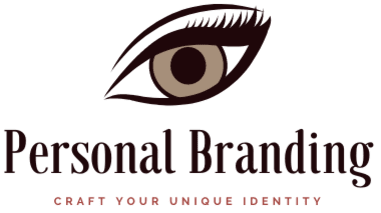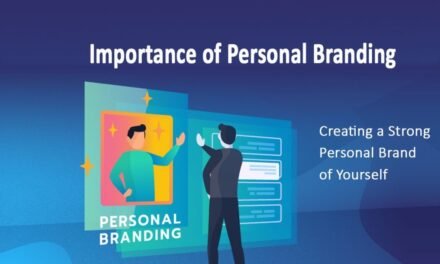Personal Branding Gospel: Building a Brand That Speaks for You
In today’s world of fierce competition and digital saturation, standing out can be the difference between success and obscurity. Personal branding is no longer just an option; it’s a necessity for anyone wanting to thrive in their career, whether they’re an entrepreneur, freelancer, or corporate professional. But what exactly does it mean to build a personal brand, and how can you make sure it’s authentic, effective, and influential?
Let’s dive into the Personal Branding Gospel—the core principles and practices that will help you create a personal brand that not only resonates with your audience but also positions you as a leader in your field.
1. Know Yourself: The Foundation of Your Brand
Before you can build a brand, you need to understand who you are. Personal branding starts with self-awareness. You need to identify your strengths, values, passions, and unique experiences. Without this foundational understanding, your brand will lack clarity and authenticity.
Ask yourself:
- What are my core values?
- What makes me different from others in my industry?
- What is my mission or purpose?
Your personal brand should align with these answers. Authenticity is key—don’t try to be someone you’re not. People are drawn to genuineness, and they’ll trust you more when they feel you are real and transparent.
2. Your Story: Crafting a Narrative That Resonates
Humans are wired for stories. Storytelling is one of the most powerful tools in personal branding. Your story is what makes you relatable and connects you emotionally with your audience.
What’s your journey?
Think about the challenges you’ve overcome, the lessons you’ve learned, and the milestones that have shaped who you are today. Share these elements of your story through your content, whether it’s blog posts, social media updates, or public speaking.
A well-crafted narrative not only demonstrates your expertise but also humanizes you. It lets people see you as someone they can trust and relate to, rather than just a faceless expert.
3. Consistency: The Secret to Building Trust
One of the most powerful principles of personal branding is consistency. Whether it’s the tone of your voice, the design of your website, or the type of content you share, consistency helps build recognition and trust over time.
Be consistent in the following areas:
- Visual identity: Your logo, website, and social media profiles should all reflect a unified visual aesthetic.
- Messaging: Your core messages—who you are, what you offer, and how you help people—should be the same across all platforms.
- Content: Whether you’re posting on LinkedIn, Instagram, or your blog, consistency in the type of content you provide (value-driven, educational, or motivational) helps establish you as a thought leader.
People need to see your brand repeatedly to start associating your message with your identity. Regular content updates, social media engagement, and email newsletters can help keep you top of mind.
4. Build Your Online Presence: Your Digital Footprint
In the digital age, your online presence is often the first impression people have of you. Whether you’re trying to land clients, grow your audience, or position yourself as an industry leader, your digital footprint plays a crucial role.
Start by optimizing your social media profiles, making sure they align with your brand values and are up to date. This includes LinkedIn, Twitter, Facebook, Instagram, and even niche platforms depending on your industry. Your website is also crucial—it should act as the central hub for all your content, resources, and offers.
Key elements to include in your digital footprint:
- A professional and cohesive LinkedIn profile that highlights your expertise, experience, and achievements.
- An engaging website or portfolio that showcases your work, client testimonials, and case studies.
- Active engagement on social media platforms that align with your brand, sharing insights, tips, and personal anecdotes.
The goal is to create an online presence that reflects your brand’s personality and provides value to your audience consistently.
5. Thought Leadership: Position Yourself as an Expert
A major aspect of personal branding is establishing yourself as a thought leader. Being a thought leader means that you are recognized as an authority in your field. This doesn’t necessarily mean you need to have all the answers, but you should be seen as someone who is always learning, sharing valuable insights, and inspiring others.
To establish thought leadership:
- Regularly create and share value-driven content: blogs, videos, webinars, and podcasts are all great ways to educate and inform your audience.
- Collaborate with other thought leaders: Guest posts, joint webinars, and networking events help expand your reach and credibility.
- Speak at industry events or contribute to relevant forums and discussions.
Positioning yourself as a thought leader will increase your visibility and attract opportunities that align with your personal brand.
6. Networking and Relationships: Building Connections That Matter
Personal branding isn’t just about broadcasting your message to the world; it’s about creating relationships. Networking is a key part of building your personal brand. People trust people they know, and building genuine, valuable relationships will expand your influence and open up new opportunities.
Attend industry events, webinars, and conferences to meet like-minded individuals. Engage on social media by commenting on posts, joining groups, and offering helpful insights. Always aim to add value to others’ lives without expecting anything in return.
Networking isn’t just about quantity; it’s about the quality of the relationships you build. The deeper the connection, the more likely people are to trust you and recommend your services or products.
7. Authenticity and Vulnerability: Show the Real You
People want to connect with real people, not a curated version of you. Authenticity and vulnerability are powerful tools in personal branding. Don’t be afraid to share your challenges, mistakes, and imperfections.
Sharing your setbacks humanizes you and makes you more relatable. It also allows others to see your resilience and determination. Whether it’s sharing a story of failure or being open about your journey, these moments of vulnerability create deeper bonds with your audience.
8. Evolve and Adapt: Stay Relevant
Personal branding is not static; it’s a process of constant evolution. As you grow in your career and your industry evolves, so should your brand. Be open to feedback, adapt to changes in your field, and refine your brand messaging as necessary.
To stay relevant:
- Regularly evaluate your brand’s performance.
- Keep learning and growing in your area of expertise.
- Update your content and skills to reflect the latest industry trends and technologies.
By continually evolving, you ensure that your personal brand stays fresh and aligned with your long-term goals.
Conclusion: The Power of Personal Branding
Building a personal brand is not an overnight process. It takes time, effort, and intentionality. But the payoff is immense. A well-crafted personal brand can open doors to new opportunities, increase your influence, and build lasting connections. It can also be the key to unlocking greater satisfaction and success in your career or business.
By following the Personal Branding Gospel—knowing yourself, crafting a compelling story, staying consistent, building your online presence, establishing thought leadership, networking authentically, and evolving with the times—you can build a brand that speaks for you long after you leave the room.



